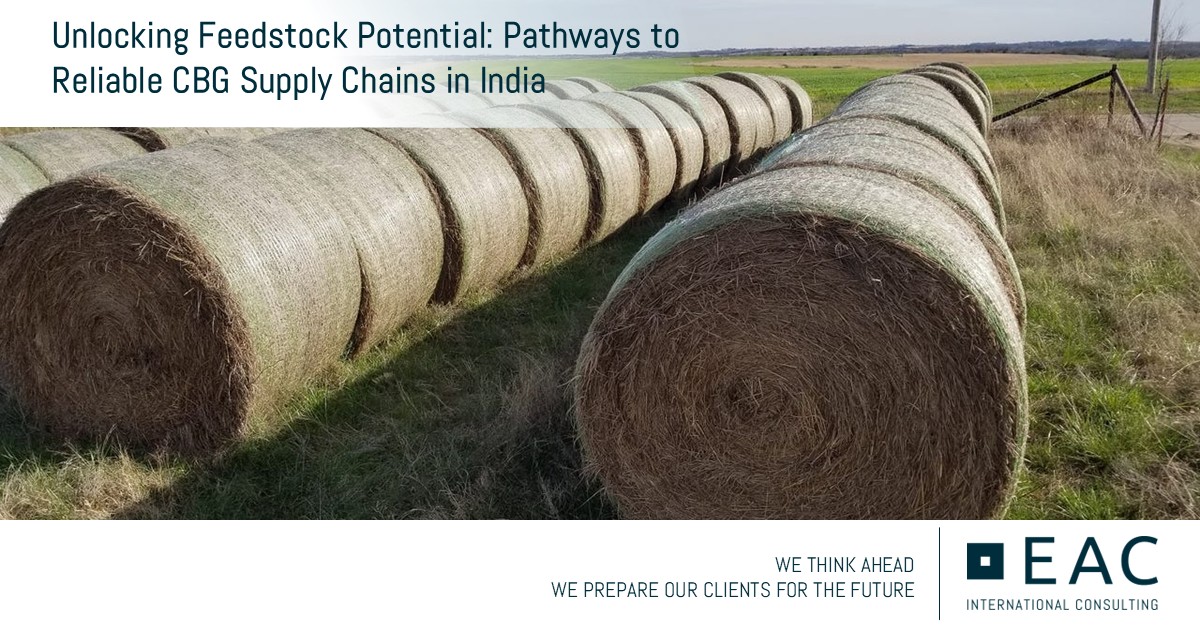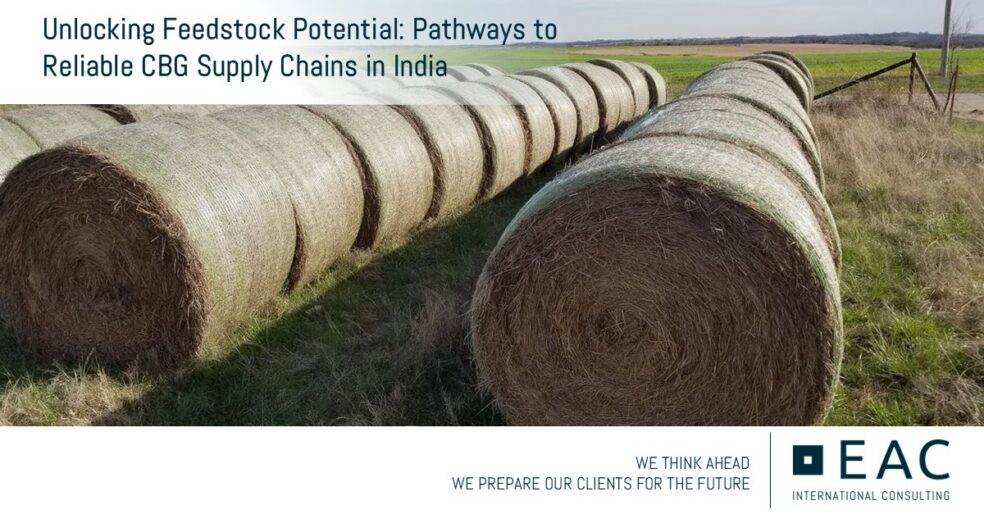Unlocking Feedstock Potential: Pathways to Reliable CBG Supply Chains in India
India’s CBG industry holds tremendous potential of 9.2–12.9 million tonnes per annum (MTPA), offering a significant opportunity to reduce imports of natural gas and crude oil while contributing to the nation’s net-zero targets.

The abundance of biomass resources, favourable government policies, the need to improve soil health, and India’s green transition initiatives are key enablers that create strong prospects for scalable renewable energy.
- Among major biomass sources, agri-residue accounts for nearly three-fourth of the total potential, while municipal solid waste (MSW), press mud, and animal manure form the remaining key feedstocks
- Policy initiatives such as the SATAT scheme, CBG–CGD Synchronization, CBG Blending Obligation, Central Financial Assistance, and Market Development Assistance (MDA) are fostering a conducive ecosystem for industry growth
- Declining soil organic carbon levels further highlight the importance of utilizing carbon-rich organic fertilizers derived from bio-slurry and digestate
Unlocking India’s CBG Potential Through Agri-Residue Security
India generates more than 750 million tonnes of agri-residue each year, offering a high CBG yield of 10–14%, underscoring its importance as the cornerstone of the CBG industry. From a producer’s perspective, achieving the desired yield depends not only on technology optimization but also on a clear understanding of feedstock availability within the plant’s operational radius. For instance, a 10 TPD CBG plant based on agri-residue requires 35,000–40,000 tonnes of residue annually. Further, agri feedstock accounts more than 50% of overall operational costs, highlighting that stable, quality-controlled biomass access is crucial for ensuring project viability and scalability. Therefore, every CBG developer must address two fundamental questions:
- What proportion of agri-residue is practically accessible for CBG production within the plant’s operational radius of 50 km
Despite India’s abundant agri-residue generation, several challenges—including seasonal availability, short collection windows, competing uses such as fodder, industrial fuel, and logistical constraints limit its actual accessibility. Consequently, only a fraction of agri-residue, particularly paddy straw and sugarcane trash, is truly available for CBG production, as large volumes are either utilized for other purposes or subjected to open burning by farmers in northern states. Regional variability and competing applications further add to the complexity. For instance, paddy straw is subjected to open burning in northern India but used as fodder in the east and south, reflecting differences in cropping intensity and dual-cropping patterns.
- What strategies can be adopted to ensure reliable, year-round feedstock availability?
Plant requires localized feedstock assessments and multi-stakeholder coordination among farmers, aggregators, and village-level enterprises (VLEs) to ensure steady feedstock procurement. Establishing efficient collection, aggregation, and storage systems is therefore central to converting India’s theoretical biomass potential into reliable, year-round feedstock security, forming the foundation for various supply chain models adopted by CBG producers.
Effective supply chains form the basis for continuous CBG manufacturing. Residue should be gathered 15–20 days after harvest and stored in facilities to maintain quality and minimize losses. Four feasible supply models can be employed by CBG producers, each with its own pros and cons:
- Full in-house model – CBG producer controls all supply chain steps
- Farmer/VLE-led collection and storage by CBG producers – Farmers/ VLEs handle collection, while CBG manages storage
- Aggregator collection and storage by CBG producers – Aggregators collect while CBG producer stores
- End-to-end aggregator (just-in-time delivery) – Aggregators control all supply chain steps
While fully in-house models offer greater control over feedstock quality and availability, aggregator-led models provide scalability and regional reach. The optimal approach ultimately depends on plant capacity, location, and the CBG producer’s operational priorities.
EAC as a Facilitator for Successful Business in the CBG Domain
Realizing India’s CBG potential hinges on ensuring a reliable and cost-efficient feedstock supply, the single most critical factor determining long-term project success. EAC International Consulting partners with CBG producers, EPC contractors, investors, and policymakers to address this challenge through comprehensive, end-to-end support.
Our expertise spans regional feedstock mapping, feasibility and techno-economic assessments, supply chain model design, and cost benchmarking enabling clients to develop scalable and commercially viable business models.
With a deep understanding of policy frameworks and on ground realities, EAC empowers stakeholders to design resilient feedstock ecosystems, mitigate supply risks, and enhance operational efficiency. Through these integrated capabilities, we help accelerate India’s bioenergy transition and transform the CBG opportunity into a sustainable, profitable reality.
Our team of experts Dr. Rajesh Raut and Vansh Kamra will be delighted to engage in a meaningful conversation with you.
Latest
Unlocking Feedstock Potential: Pathways to Reliable CBG Supply Chains in India

China’s October 2025 Export Controls: Strategic Implications for Global Industries

India’s Manufacturing Moment: Why Assembly Is Not a Weak Start

The Johor-Singapore Special Economic Zone: Where Strategic Vision Meets Market Reality


